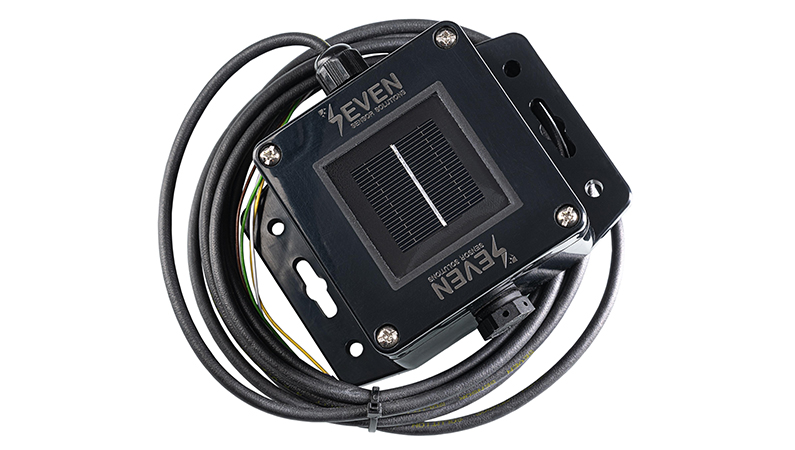In solar energy systems, irradiance is the main factor for understanding performance and efficiency. The SEVEN Low-Cost Irradiance Sensor (3S-IS-LR) delivers essential solar radiation data at a fraction of the cost of high-end pyranometers, making it the ideal choice for budget-conscious solar monitoring applications.
What Is an Irradiance Sensor?
An irradiance sensor measures the power of solar radiation received on a surface, expressed in watts per square meter (W/m²). In PV plants, this data is essential for Monitoring real-time performance ratios.
The SEVEN Low-Cost Irradiance Sensor offers a reliable, cost-effective alternative to full-class pyranometers, while retaining the performance needed for most industrial PV applications.
Key Features of SEVEN Low-Cost Irradiance Sensor
- Compact & Durable Housing: Designed for long-term outdoor use with IP65-rated protection.
- Digital Output: SEVEN Low-Cost Irradiance Sensor communicates via Modbus (RS485) for an easy system integration.
How Does the Low-Cost Irradiance Sensor Work?
The sensor is installed in the same azimuth and tilt angles as the PV modules. It detects incident solar radiation using a reference cell and converts it into an electrical signal, which is transmitted to the monitoring system as value in W/m2.
Why Choose a Low-Cost Sensor?
Not every project requires a high-end Class A pyranometer. The SEVEN Low-Cost Irradiance Sensor is ideal when:
- Cost efficiency is essential (e.g., residential projects).
- Real-time monitoring is needed without advanced spectral accuracy.
- Multiple sensor points are required (e.g., row-level or tracker-level measurements).
- Benchmarking is sufficient rather than laboratory-grade measurement.
- External Temperature Monitoring: Either Module Temperature or Ambient Temperature Sensor, SEVEN offers a Low-Cost Irradiance Sensor model that allows the connection of an external Temperature sensor (3S-IS-LR-T)
Integration Made Simple
With the Modbus RTU Output, the SEVEN sensor integrates easily with:
- Inverter data ports
- Dataloggers (analog or RS485)
- SCADA systems and remote monitoring tools
- Performance modeling software
Its standard industrial communication and mounting compatibility allow quick deployment in both new installations and retrofits.
Best Practices for Use of Low-Cost Irradiance Sensor
To ensure accurate irradiance measurement:
- Align the sensor properly with the module tilt.
- Clean the sensor surface regularly to avoid dust or debris interference.
- Avoid shading from nearby objects, modules, or cabling.
SEVEN Low-Cost Irradiance Sensor: Smart Savings, Reliable Data
Get reliable irradiance measurements without overextending your project budget. The SEVEN Low-Cost Irradiance Sensor delivers the accuracy, durability, and compatibility solar operators need, at a price point that makes sense for wide deployment.
Ready to upgrade your solar performance monitoring?
Contact SEVEN for technical guidance, integration support, or to request a product sample.
